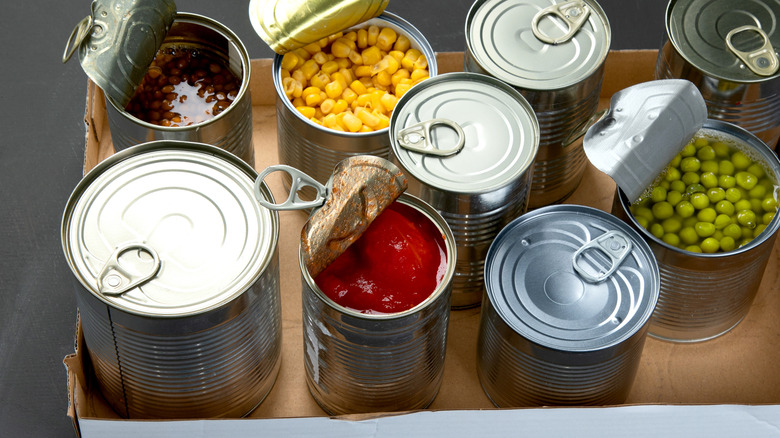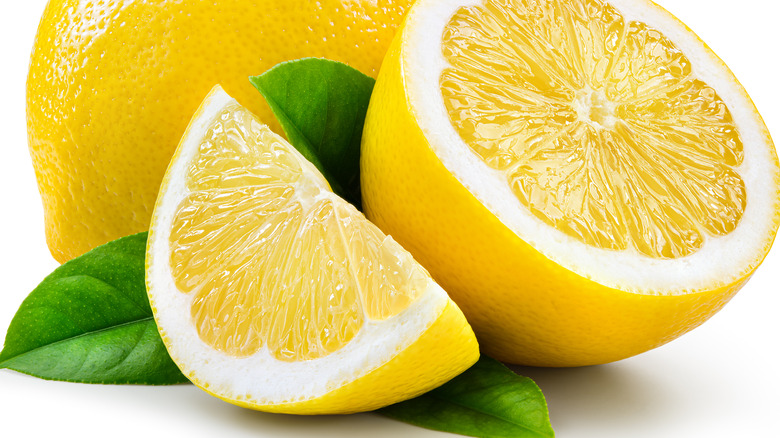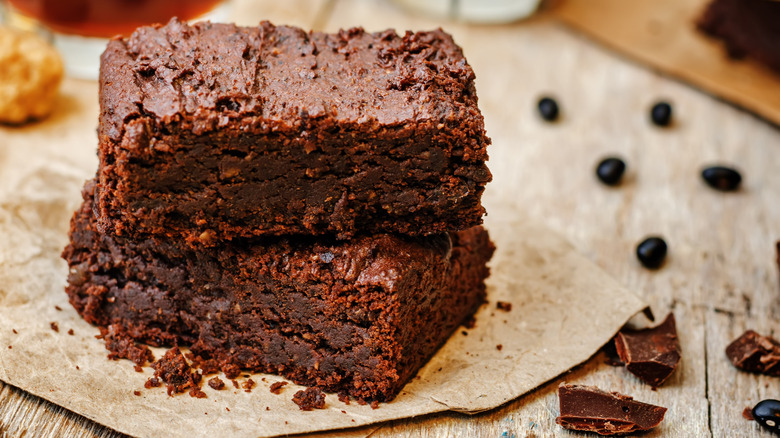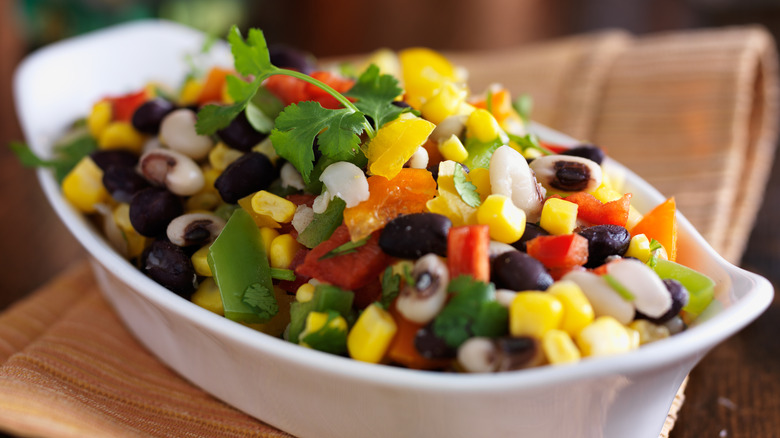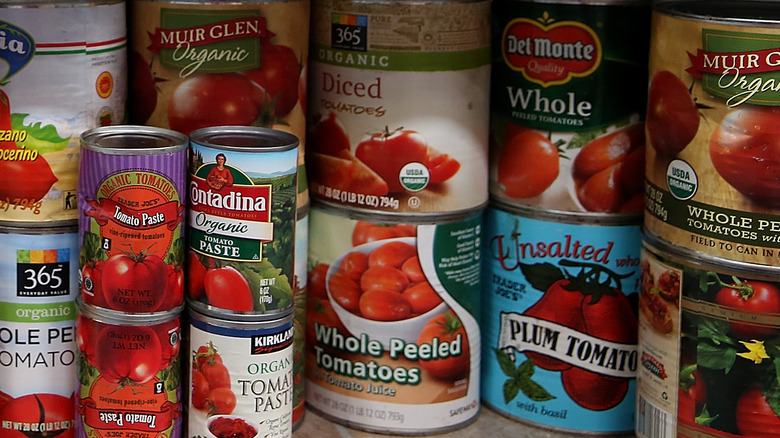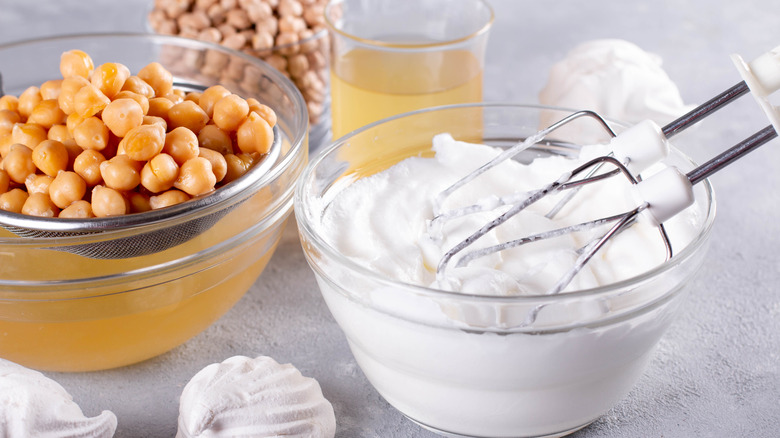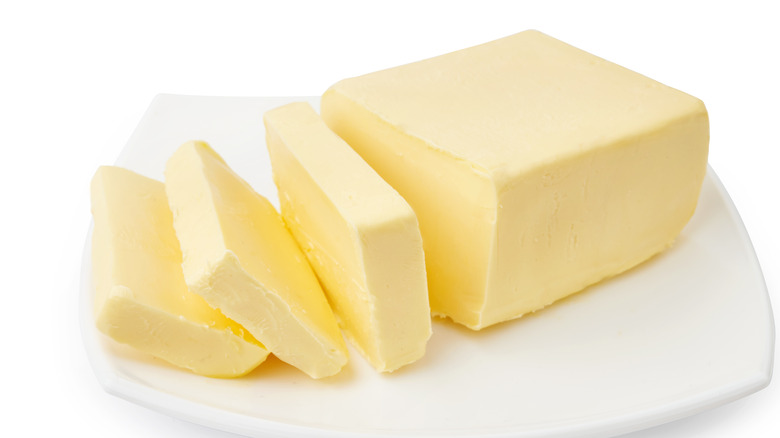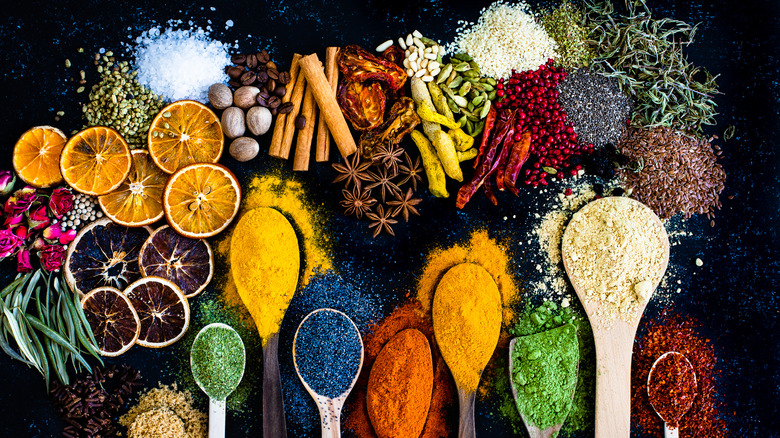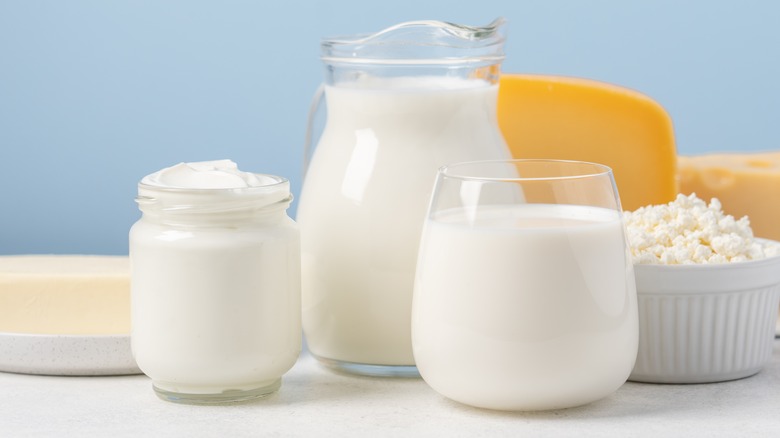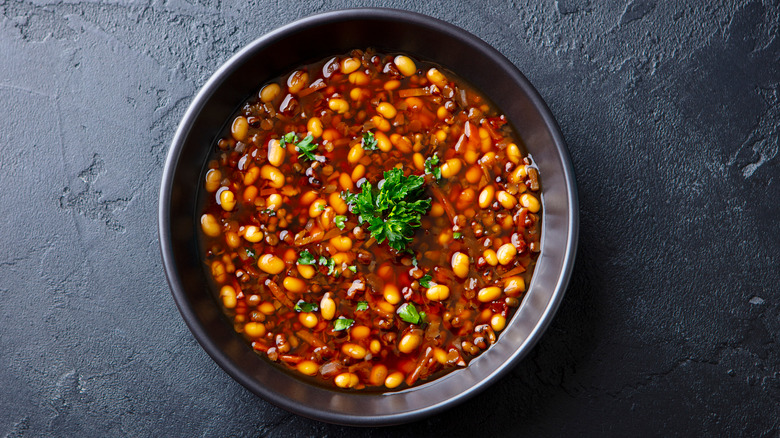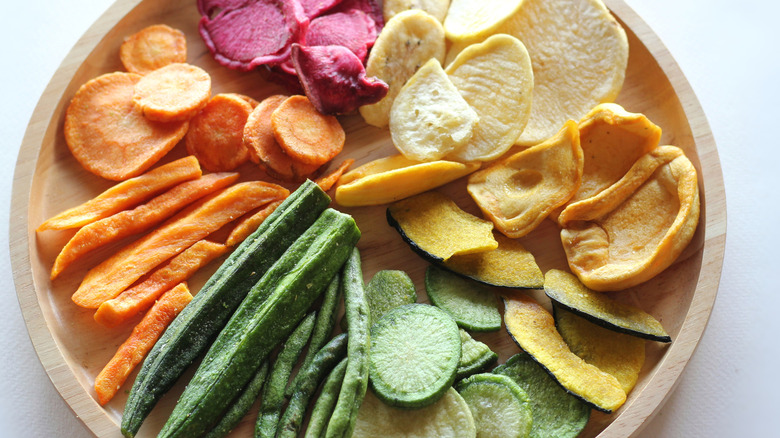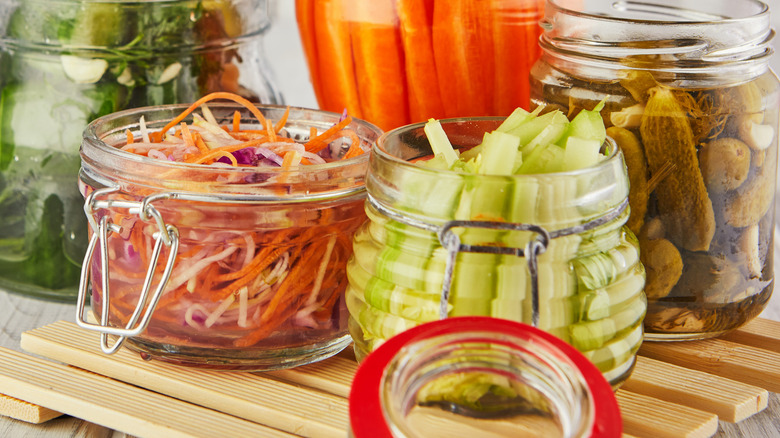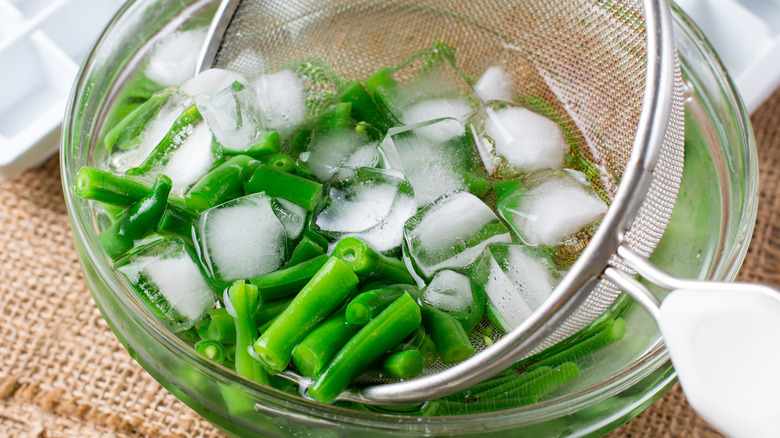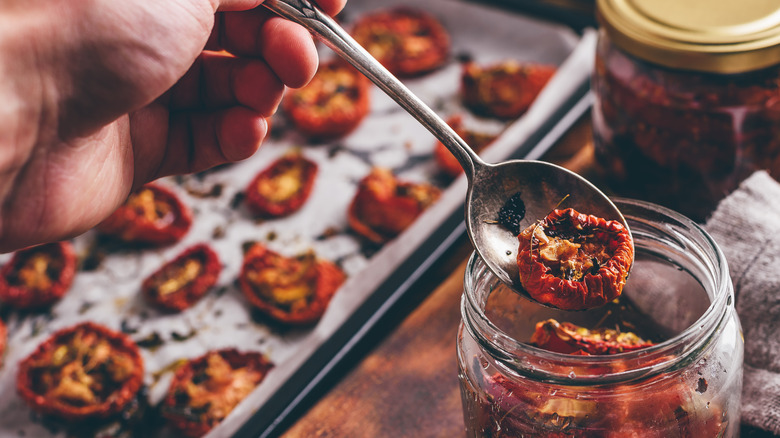Canned Vegetable Hacks You'll Wish You Knew Sooner
While canned foods today aren't likely to conjure up ideas of fancy French cuisine, according to History, the first foods were canned in champagne bottles in 18th century France. Nicolas Appert is credited with creating the canning process (along with bouillon cubes and nonacidic gelatin extraction, says the International Food Additive Council). This work was an entry in a French contest to revolutionize food preservation. Eventually, Appert's process was refined to glass containers and metal tins (sometimes even cast iron). Of course, canned vegetables came before can openers, so opening a can back then was quite the endeavor — it involved chisels and even bayonets.
These days, we know more about the science behind canning and how to keep germs away. You can find canned vegetables (and other foods) on supermarket and specialty store shelves. While it's true that they can get a bad rap, there are many reasons you should always keep canned vegetables in your pantry. Fresh produce prices are on the rise, but that doesn't mean our nutritional needs have changed. Having canned vegetables on hand is an affordable way to make sure you're eating enough of your recommended daily intake of five-to-10 fruits and vegetables.
We hear you, eating a canned carrot isn't the same as crunching into a fresh one. However, there are many ways to make the most out of your canned veggies and make them taste great, especially if you use one of these canned vegetable hacks you'll wish you knew sooner.
Add acid
Canned vegetables have many benefits. Some of them, such as tomatoes and carrots, are actually more nutritious when canned. Eating canned vegetables allows you to enjoy your favorites even when they are out of season. And the canning process kills off a lot of bad bacteria. Still, there's no denying that canned veggies do not taste the same as fresh. If you want to get your canned veggies a little closer to the taste of fresh ones, there are some things you can do.
One way to liven up the dullness that can accompany canned vegetables is to hit them with some acid. That acid can come by way of a splash of citrus or vinegar. You can even serve your veggies up with pickles or other fermented foods. According to a study done by researchers at Brandeis University, this works partly because of the sweet and sour flavor receptors that citric acid activates.
Bonus tip: Acid is a secret ingredient that makes your canned fruit even better, too.
Beans in your brownies
Who doesn't love dessert? (Ok, ok, we know some of you don't). But most people love dessert and are often looking for ways to make these sweet treats just a little bit healthier. This is where the canned vegetable hack comes in handy! Whether you want to add a nutrient boost to your goodies for yourself or are a parent looking to sneak some more veggies into your kids' diets, this hack is perfect for you.
Are you missing a little fiber or protein from your diet? Well, your baked treats will never be the same after adding this surprising ingredient. Pureed beans can be either a fat substitute or a flour substitute. If you want to sub out the fat in your cookies or brownies, only replace ¾ of your fat with beans. However, if you're using bean puree to make a fiber-filled gluten-free treat, you can replace the full amount. Also, pick your bean based on the type of sweet you're making; black beans for browns, white beans or chickpeas for chocolate-chip cookies, or brownies.
Perhaps cakes are more your speed, but you want a more natural food dye. Try this red velvet beet cake recipe. Using canned beets will save you a step, and you'll be replacing the red dye 40 with a mellow, earthy sweetness. Of course, you can't forget about delicious pumpkin bread and pumpkin pie.
Use them in salads
Using canned vegetables is a great way to stretch your budget and eat your favorite vegetables out of season. But that doesn't mean we don't still crave fresh vegetables. Mixing your canned veggies with fresh ones in salads allows you to eat seasonally and locally, all while staying within a budget.
This cowboy caviar recipe, for example, uses canned corn and beans as well as fresh onion and bell pepper (and optional avocado). Those minimal fresh ingredients really go a long way towards livening up the canned ones. Serve this special salad on bread or use it as a dip for chips.
You could also try making a garbage salad, which is a way to use up all the leftovers in your fridge. Do you have some canned olives left over from taco Tuesday? Are there some canned corn and beans left over from making that cowboy caviar? Great! Mix them in with the fresh veggies you haven't yet used up this week to create your own culinary masterpiece.
When cooking with vegetables, it's not an either-or situation; you can ease your budget by replacing some of your fresh vegetables with canned.
Save that tomato juice
This canned tomato tip will take your flavor up a notch. Like most of us, you've probably wondered if you should get rid of the liquid your canned vegetables are sitting in. In the case of canned tomatoes, the answer is a definite no. If your recipe calls for tomatoes and not the juice, they're packed in; save that juice and use it later. Think of it as tomato broth, which means it's way tastier than water when you're making soups or sauces. Tomato juice from a can is best used within a week, but don't worry because it freezes well. Try making tomato "ice cubes" for easy storage. Once your cubes are frozen, you can pop them out into a freezer bag or container and use them as needed.
Canned tomatoes are a fantastic food to have in your pantry. Since they're picked and preserved at their freshest, they really do taste better than the fresh ones you can buy at your local market. Plus, they're available year-round, and a can is good for about two years. What's not to love?
Save that bean juice
Beans, beans, the magical fruit, the more you eat 'em, the more ... uses you find for them. On that note, you should never get rid of the liquid from your canned beans. If you've "bean" on social media in the last few years, chances are you've seen the word aquafaba. While it may sound fancy, it's really just the cooking liquid from beans. So, what do you use aquafaba for?
It's handy in vegan cooking since it's a stellar egg replacement that whips up just like egg whites. Thanks to aquafaba, plant-based eaters or those with egg allergies can now enjoy macarons, macaroons, and merengues. And while you can use the cooking liquid from your home-cooked beans, the aquafaba from canned beans can be more foolproof.
Look for this ingredient when buying canned chickpeas for aquafaba: kombu. It's a seaweed that stabilizes the aquafaba, meaning you don't have to add your own stabilizers, such as lemon juice or cream of tartar. Just make sure you check out sodium content and adjust your recipes accordingly.
Bonus tip: When making hummus, use aquafaba instead of water to thin out the mixture. It'll make a world of difference.
Add fat
Let's get real here for a second: We know canned vegetables taste a bit different from their fresh counterparts, but why is that? The Encyclopedia of Food Sciences and Nutrition (Second Edition) says that during processing for canning, the vegetables' cell walls break down. This process is part of what causes the veggies to lose their complexity of flavor. Sometimes companies will use additives to counteract this, but a simple way to get some of that lost flavor back is to add fat. Butter, bacon, olive oil — these fatty foods all add depth to your canned veggies.
Why does this work? Well, fat has a lot of flavors. A study published in The Journal of Neuroscience: The Official Journal of the Society for Neuroscience found that primates' brains respond positively to the taste and texture of fat. So, yes, your preference for bacon over broccoli may, in fact, be totally natural.
Make it spice-y
There's a huge misconception that just because the vegetables we buy are "fresh," they're freshly picked. That's not necessarily true. In fact, some of your supermarket produce may be just as old as its canned counterparts. But that doesn't mean you don't need to give your canned veggies a flavor boost. Spices and herbs can brighten your canned vegetables and bring out their flavors. It's an easy way to make your canned foods more flavorful.
Which spices you use depends on a couple of factors: the vegetable(s) you're using and your dish. Naturally, Italian and Mexican flavors pair well with tomatoes. But tomato also pairs well with cinnamon, such as in shakshuka (poached eggs in sauce). Add fresh dill to your next meal of canned spinach. Or toss some cumin seeds and fresh mint in with carrots.
If you experiment, you're bound to find flavors you like. Using interesting spice and herb combinations will elevate your canned-vegetable sides and mains, helping you forget there was ever a can at all.
Add dairy
Adding dairy to your canned vegetables is another hack to make the most of your canned vegetables. The fat in dairy will elevate the mouthfeel of your canned vegetables. Mouthfeel is one of the reasons we love fat (via The Journal of Neuroscience: The Official Journal of the Society for Neuroscience). The texture is a critical factor in whether we enjoy our food. The book Food Microstructure and Its Relationship with Quality and Stability says that the fat content in food is integral to this texture.
Dairy is one of the reasons why you should always have canned pumpkin in your pantry. Mixing a bit of pumpkin puree with Greek yogurt is a delicious, slightly sweet treat or breakfast. If you don't do dairy, coconut or cashew yogurt would be the best substitutions here, due to their high-fat content.
Come Thanksgiving, why not try a classic green bean casserole recipe with a can of green beans? These cost-effective options allow you to enjoy your favorite treats year-round without breaking the bank.
Lean into it
At the end of the day, canned vegetables aren't fresh vegetables, which is not a bad thing per se. They're just different beasts. One tactic to deal with canned vegetables is to lean into their canned nature and let them shine for what they are. We all have our strengths and weaknesses, and what better way to celebrate canned veggies than to exploit their strengths? For example, canned tomatoes are superior to fresh in almost any application that requires heat. That is why you should always have canned tomatoes in your pantry.
Soups, stews, and chilis all work really well with canned vegetables. Since these foods typically cook for a long time, allowing the vegetables to break down, the already-broken-down canned veggies are a natural fit. You'll save prep and cook time by replacing some fresh vegetables with canned ones. To keep your tasting bright, remember to add some fresh garnishes for a pop of color and flavor.
Break out your dehydrator
Canning is a great way to preserve vegetables; as is dehydrating. But did you know you can dehydrate canned vegetables? It's pretty simple. Wilderness Medical Society says all you need to do is drain your canned veggies and then place them on your dehydrator. You don't even have to rinse them. They recommend dehydrating canned corn, peas, and beans.
You may be wondering why you would do this. Well, cans are heavy, and you might not want to lug around a can of beans on your next hike or camping trip. In fact, you can even make soup out of your dehydrated, canned vegetables. So, this is a very economical and efficient way to feed yourself the next time you are out in mother nature.
Of course, not everyone has a food dehydrator. If you don't, and you still want to get in on this hack, Healthline recommends sun drying, air drying, or using your oven. If you'd like to use your oven, you must set it to 140 F and keep the oven door propped open. Be patient. These methods take time. The oven method, which is the quickest, can take more than six hours.
Make canned relish
Of course, we can't talk about canned vegetable hacks without mentioning a home canning hack. And this unusual canned celery recipe is one you've probably never heard of. We don't blame you. Celery certainly doesn't come to mind when you hear "canned vegetable." But, believe it or not, this spiced celery recipe is more than 100 years old.
It was created by Ball, the famous mason jar company that most millennials probably know from hipster bars. The brand released it in the cookbook, The BALL Blue Book of Canning and Preserving Recipes. The recipe is relatively straightforward. All you do is boil chopped celery, tomatoes, red peppers, vinegar, sugar, and spices. Then, you put the mixture in a glass jar and seal it. Ball recommends serving this relish with meat.
There are, of course, many other home canning techniques and recipes, but you ought to be very careful when you can food at home. You must follow proper protocol to ensure you don't accidentally welcome botulism into your food, which is why it can be dangerous to make your own canned food.
Blanch them
According to Our Everyday Life, canned vegetables taste the way they do because they're cooked twice. Once, in their brine or liquid, and then again after they're canned to ensure food safety. While this helps them stay shelf-stable and good for a long time, it can make them taste less-than-fresh.
Blanching your veggies can help get rid of that canned taste. To blanch your veggies, all you have to do is let the vegetables hang out in boiling hot water for two minutes. Drain them and immediately transfer them to ice water. This stops them from cooking more.
Now your canned veggies are ready to use and should taste closer to fresh. This hack is especially useful in applications where you'll be eating your veggies cold, such as salads or dips. Note: We wouldn't recommend this hack for canned tomatoes, as they will likely lose flavor and fall apart.
Roast them
This hack is a simple way to take your canned vegetables to the next level. One of the reasons that canned veggies don't always taste the same as their fresh counterparts is that they absorb a lot of liquid in their cans. That can dilute their flavor and make them mushy. How do you get that excess moisture out of the vegetables? Roast them.
The vegan influencer Tabitha Brown is credited with making this method go viral. Brown drains and rinses her canned veggies before roasting them at 475 F. But she's far from the only chef to roast her canned veggies. Different chefs and outlets make other recommendations about temperatures and methodology, but all agree that roasting improves the texture and flavor of your canned veggies.
How should you eat your roasted canned veg? However you'd like! Mix up some oil and spices to your liking, and you're good to go.
